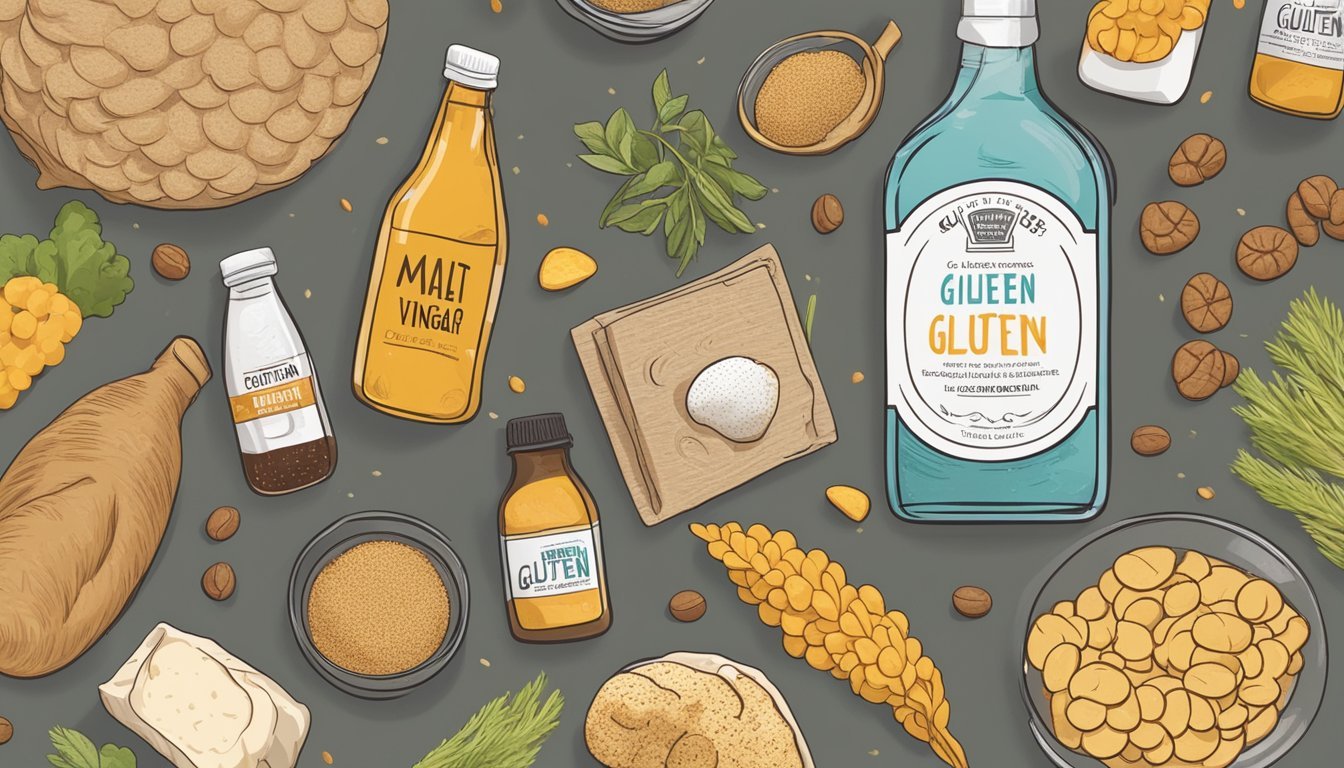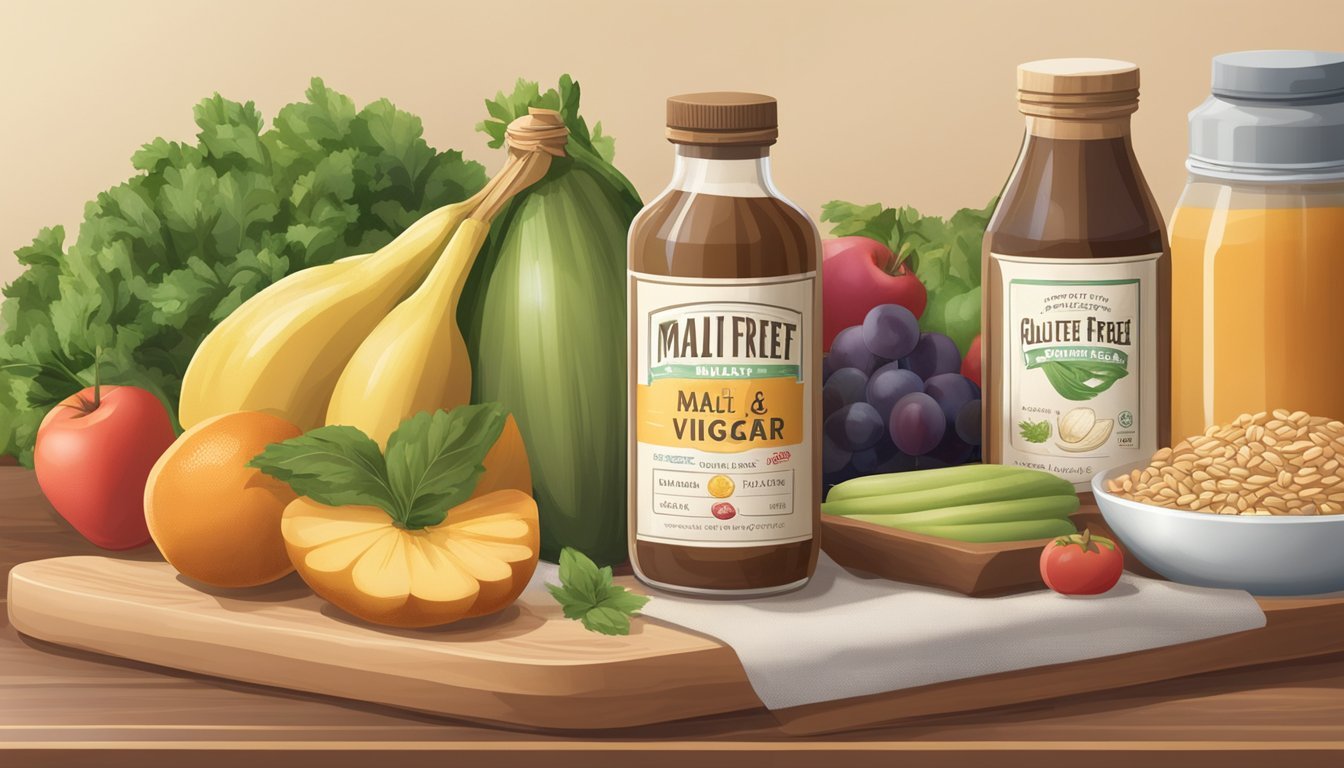Is Malt Vinegar Gluten-Free?
Unveiling the Truth for Celiac Concerns
Malt vinegar is commonly used as a condiment and flavoring in various foods, but its gluten content is a concern for individuals with gluten sensitivities or celiac disease. Gluten is a group of proteins found in grains such as wheat, barley, and rye, and it can cause health problems for those with intolerances or allergies. Since malt vinegar is traditionally made from barley, a gluten-containing grain, it contains gluten and is not gluten-free.
The fermentation process used to create malt vinegar doesn't break down the gluten proteins sufficiently to make it safe for people with celiac disease or gluten sensitivity. While some vinegars, such as distilled white vinegar, are considered gluten-free because the distillation process removes gluten, this is not the case for malt vinegar. Therefore, malt vinegar should be avoided by those following a strict gluten-free diet.
With the prevalence of gluten intolerance and celiac disease, it's essential to examine food labels carefully. Flavored and seasoned vinegars might also have added ingredients that contain gluten, which can be present in the form of malt or wheat protein. When any form of wheat protein is included, food labeling regulations require that it be listed on the package, helping consumers to make informed decisions about the products they consume.
Understanding Malt Vinegar
In this section, readers will gain clarity on what malt vinegar is, the specific process of how it is made, and how it differs from other vinegar types, which is crucial for dietary considerations.
What Is Malt Vinegar?
Malt vinegar is a type of vinegar that originates from barley, a gluten-containing grain. It derives its distinct flavor from the malting of barley, where the grains are soaked, allowed to germinate, and then dried in a process known as malting.
The Production Process of Malt Vinegar
The production of malt vinegar involves two key stages: fermentation and aging. Initially, the malted barley is fermented into an alcoholic liquid, much like beer. Then, it undergoes a secondary fermentation, where specific bacteria convert the alcohol into acetic acid, giving vinegar its sour taste. This product is not distilled, meaning the gluten from the barley remains in the final vinegar.
Comparing Malt Vinegar to Other Vinegars
In contrast to malt vinegar, distilled vinegars—such as distilled white vinegar—are processed to remove impurities and non-volatile compounds, which can include gluten. Apple cider vinegar, wine vinegar (including red wine vinegar), and rice vinegar are also considered gluten-free alternatives. These vinegars are derived from different sources and follow varied fermentation processes that do not involve gluten-containing grains. Balsamic vinegar and sherry vinegar are made from grapes and are gluten-free as they do not involve grains in their production.
Gluten and Its Effects
Understanding gluten and its impacts on health is crucial, especially for individuals managing Celiac Disease or gluten sensitivity where strict adherence to a gluten-free diet is necessary.
What Is Gluten?
Gluten is a group of proteins commonly found in wheat, barley, and rye. It is responsible for the elasticity and chewiness in breads and is ubiquitous in various food products.
Health Effects of Gluten
For most people, gluten is tolerated well and does not cause adverse health effects. However, for some, gluten can trigger an immune response leading to inflammation, intestinal damage, and symptoms such as abdominal pain, bloating, and diarrhea.
Gluten-Related Disorders
Celiac disease is an autoimmune condition where gluten ingestion leads to damage in the small intestine, causing malabsorption of vitamins and minerals, and may present with symptoms ranging from digestive issues to headaches. Non-celiac gluten sensitivity, while less understood and not associated with intestinal damage, can produce similar symptoms and necessitates a gluten-free diet for symptom management.
Malt Vinegar and Gluten Content
Malt vinegar's gluten content is a crucial consideration for those with gluten sensitivities or celiac disease, as it is traditionally derived from barley, a gluten-containing grain.
Is Malt Vinegar Gluten-Free?
Malt vinegar originates from barley, which inherently contains gluten, a protein that is problematic for individuals with celiac disease or gluten intolerance. During the production process, barley undergoes fermentation, resulting in vinegar with a distinctive taste. However, this process does not remove all gluten proteins, often leaving behind gluten residues. As such, traditional malt vinegar is not gluten-free and should be excluded from a gluten-free diet.
The Role of Distillation in Gluten Removal
In some cases, malt vinegar can be distilled, a process that could potentially remove gluten proteins to a level safe for consumption by those with gluten sensitivities. However, it is essential to note that not all vinegar undergoes this process. When it does, it involves the condensation and collection of the vapor, which theoretically could leave gluten proteins behind. The key factor is whether the distillation process can remove enough gluten to meet the certified gluten-free threshold, which is less than 20 parts per million, as endorsed by gluten-free certification organizations.
Assessing the Gluten Level in Malt Vinegar
Determining the precise level of gluten in malt vinegar is challenging due to the complexity of testing hydrolyzed and fermented products. Current testing methods may not accurately quantify the gluten content once it has been broken down through fermentation. For those with celiac disease, the safest course is to avoid malt vinegar, unless specifically labeled as gluten-free. Although some believe that the fermentation process sufficiently breaks down gluten, organizations such as Coeliac UK advise against consuming malt vinegar due to the uncertainty of its gluten content.
Dietary Considerations
When it comes to incorporating malt vinegar into a gluten-free diet, it's crucial to understand its origins and potential for containing gluten. Malt vinegar is typically derived from barley, a gluten-containing grain. This section explores how to approach malt vinegar if one adheres to a gluten-free diet, gluten-free alternatives to malt vinegar, and tips for meticulously reading labels to identify hidden gluten.
Incorporating Malt Vinegar into a Gluten-Free Diet
Malt vinegar is generally not recommended for those on a gluten-free diet due to its origin from barley, which contains gluten. Even though fermentation breaks down some gluten, the remaining amounts can vary and testing methods for hydrolyzed products are not wholly reliable. Individuals with gluten intolerances or celiac disease should typically avoid consuming malt vinegar or seek certified gluten-free versions that are safe for consumption.
Alternatives to Malt Vinegar for Gluten-Free Diets
For those requiring gluten-free options, several alternatives to malt vinegar exist:
Apple Cider Vinegar: A popular substitute, it offers a fruity tang.
White Vinegar: Made from distilled grain alcohol, it is gluten-free by distillation.
Rice Vinegar: Mild in flavor, suitable for Asian cuisine.
Balsamic Vinegar: Provides a sweet and rich flavor.
Wine Vinegar: Derived from red or white wine, it can be used for vinaigrettes and sauces.
It is essential to verify that these substitutes are labeled gluten-free, as cross-contamination can occur during processing.
Reading Labels and Identifying Gluten
Vigilance in reading ingredient lists is key for those with gluten sensitivities:
Look for terms such as "barley malt extract" or other gluten containing grains.
Products should be clearly labeled as "gluten-free" to ensure safety.
Flavored vinegars may contain added ingredients that include gluten, so they should be scrutinized carefully.
Adhering to these strategies can help maintain a gluten-free diet while mitigating the risk of gluten exposure.
Legislation and Certification
This section provides an essential understanding of the regulations and certifications that govern the labeling of gluten-free products, such as malt vinegar, and the impact these standards have on manufacturers and consumers.
Gluten-Free Labeling Regulations
The U.S. Food and Drug Administration (FDA) has stringent regulations for products labeled as "gluten-free." Under the FDA's guidelines, a product must not contain any ingredients that are gluten-bearing grains like wheat, barley, or rye, or derivatives of these grains that have not been processed to remove gluten.
Manufacturer Requirements:
Must ensure that gluten-free products contain less than 20 parts per million (ppm) of gluten.
Both inherently gluten-free items and products processed to remove gluten must meet this threshold.
There's a specific rule for fermented and hydrolyzed products, requiring gluten removal from gluten-containing starting materials.
For malt vinegar, the FDA specifies that fermented foods (What wine goes well with fermented foods?) using gluten-containing grains must be processed to eliminate gluten to the level of less than 20 ppm to be labeled gluten-free. Therefore, since malt vinegar is made from barley, a gluten-containing grain, it must undergo such processing or be created from gluten-free starting materials to carry a gluten-free label.
Certification and Endorsements for Gluten-Free Products
Independent organizations provide certification programs that endorse gluten-free products. These certifications help consumers, especially those with celiac disease, trust that the products meet strict gluten-free standards to avoid cross-contamination during manufacturing.
Certifications:
Represent third-party validation that a product meets gluten-free standards.
Often exceed FDA requirements, offering additional reassurance to consumers.
Manufacturer Considerations:
To be certified, manufacturers must implement stringent processes within their manufacturing facility to prevent gluten cross-contamination.
Certified gluten-free products carry specific logos on their packaging, which indicate that a product has passed the rigorous testing required by the certifying body.
These programs are especially critical for celiacs and those sensitive to gluten, as they rely on robust systems to ensure the safety and integrity of gluten-free labeled products.
Potential Risks and Precautions
In considering whether malt vinegar is gluten-free, it's critical to address the associated health risks for individuals with gluten-related disorders and the measures needed to avoid gluten exposure.
Health Risks of Unintended Gluten Ingestion
For individuals with celiac disease or gluten intolerance, ingesting gluten can lead to serious health complications. Malt vinegar is derived from fermented barley, a source of gluten, posing a risk if consumed. Unintended ingestion of gluten can trigger digestive issues, fatigue, and other symptoms associated with celiac disease.
Preventing Gluten Cross-Contamination
It is imperative to prevent gluten cross-contamination in foods claimed to be gluten-free. Even residual gluten in the production facilities can contaminate the final product. Individuals should ensure that malt vinegar, or any product containing it, has been handled in a facility that strictly adheres to gluten-free standards.
Identifying Hidden Sources of Gluten
Commonly, malt vinegar is not labeled as gluten-free, and it is essential to scrutinize ingredient lists when seeking to avoid gluten. Products containing malt vinegar might not always have visible warning labels, thus requiring a vigilant approach to avoid unintentional intake of gluten for those with sensitivities.
Practical Advice
When selecting vinegar for a gluten-free diet, it is crucial to understand which varieties are safe and which should be avoided. This section provides guidance on choosing gluten-free vinegar and managing a gluten-free diet efficiently.
How to Choose Gluten-Free Vinegar
Understanding Vinegar Types: The key to choosing safe vinegar lies in its origin. Spirit vinegar, derived from molasses or corn, is considered gluten-free as it undergoes a distillation process that eliminates gluten. In contrast, malt vinegar is generally produced from barley, a gluten-containing grain. Hence, malt vinegar should be avoided by those on a gluten-free diet because the fermentation process does not remove all gluten particles.
Look for Certification: Seek out vinegars with a gluten-free certification label, as these have been verified to meet strict gluten-free standards.
Read Labels Carefully: Manufacturers may use additives that contain gluten. Always check ingredient labels for hidden gluten sources.
Tips for Managing a Gluten-Free Diet
Kitchen Best Practices: Cross-contamination is a concern for those on gluten-free diets. It is crucial to have separate utensils and preparation areas for gluten-containing foods and gluten-free foods.
Educate Yourself on Ingredients: Some enzymes and additives, including those used to ferment sugars in the process of making vinegar, could be derived from gluten sources. Always research these ingredients to ensure they do not contain gluten.
Maintain a Balanced Diet: Incorporating a variety of gluten-free foods is important to obtain all necessary nutrients. Include fruits, vegetables, proteins, and gluten-free grains.
Consult with Professionals: A dietitian can provide personalized dietary advice for those with gluten sensitivities or celiac disease and can offer strategies to ensure adherence to a gluten-free diet.






